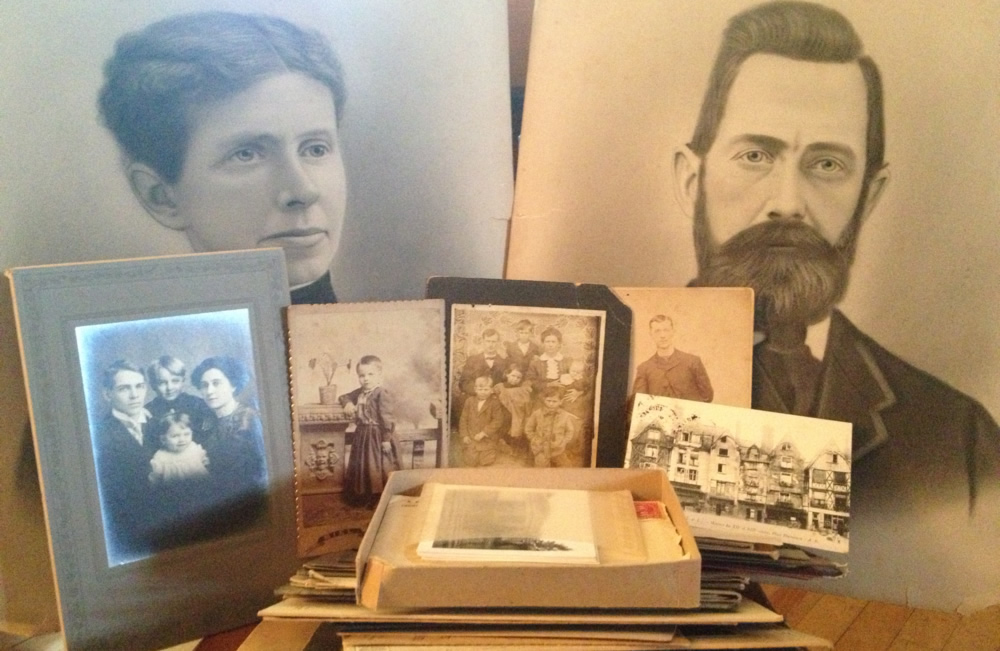 In this week’s Focus below, read West Ashley educator Elizabeth Halberstadt’s touching story of how she reconnected families with long lost photos. Last month, she tracked down a descendant of the people pictured above and sent a boxful of photos to them in Indiana. Photos courtesy Elizabeth Halberstadt.
In this week’s Focus below, read West Ashley educator Elizabeth Halberstadt’s touching story of how she reconnected families with long lost photos. Last month, she tracked down a descendant of the people pictured above and sent a boxful of photos to them in Indiana. Photos courtesy Elizabeth Halberstadt.
IN THIS ISSUE
PHOTO: Treasure trove of family photos
FOCUS: The photo sleuth
BRACK: Acts of forgiveness may offer key to real power
IN THE SPOTLIGHT: Charleston Green Commercial
GOOD NEWS: County offers redesigned GIS site
FEEDBACK: Send your letters today
CALENDAR: From back-to-school to dramarama
REVIEW: The Travels of Daniel Ascher
MYSTERY: Dappled light
S.C. ENCYCLOPEDIA: Gov. Robert E. McNair
TODAY’S FOCUS
The photo sleuth
West Ashley woman helps reconnect families to their pasts through old photos
By Elizabeth Halberstadt
Initial July 19 email from Halberstadt to Mr. K.B., Louisiana
“This afternoon I purchased some old photographs at an estate sale in Charleston, SC. Among them are photographs of KEB, Jr. at age 8 1/2 months and a pair of photographs of FDB and EB. A fourth simply says Grandmother B”. There is writing on the back of each. I’d love to see these photographs find their way back to the family. If you would like to have them, then please let me know and I’ll get them in the mail this week.”
Mr. K.B.’s response, July 19, 2015
“Well I am glad you found me. We would love the photos. How did you find me? My office address is . . . Thank you so much. I will be happy to pay for postage.”
Second email to Mr. K.B.
A little bit of online sleuthing this afternoon turned up a video of you being interviewed about your . . . company and you said you were the fourth K.B. I also located your Facebook profile. It’s a small world, as four of your friends and I share mutual friends on Facebook. My friend R.G. is friends with W.C.; they were high school classmates. W. gave R. your email and R. passed it on to me. I’ll email the photos to you tonight so you can see them before they arrive in the mail. I’m fairly certain that the baby in one photograph is your grandfather.”v
Second reply from Mr. K.B.
“I can’t thank you enough for the box of photos. Just got the time to start going through it. I can’t wait to get this to my mom and uncle. They will be thrilled. Thanks for all. I truly appreciate it.”
AUG. 10, 2015 | Sunday, July 19, was a particularly hot and humid summer day in Charleston. I planned to browse in the extra-cold air conditioned Barnes & Noble, but instead found myself drawn to the estate sale signs on the road near the bookstore.
The estate sale was for multiple estates and I found a room with black and white photographs. Old photographs have always piqued my interest. I sat on the floor for an hour, sifting and admiring the images with imprints from studios around the country.
While browsing, I decided there was a strong likelihood that with the aid of the Internet, I could locate descendants of the people in the photographs. I hated to see the photographs separated from the families. One of the employees at the estate sale came by the room and she was surprised that I was browsing the photographs of strangers so intently. She was stunned when I said that I was going to attempt to reunite the photographs with the families.
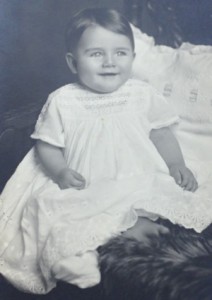 In an image from a Mississippi studio, a baby was wearing only one sock, having clearly kicked off the second sock. In another, a baby was seated on the beach next to a beach ball. Both photographs had writing on the back and identified the subjects. These photographs were from Jackson, Miss., Pennsylvania, and Terra Haute, Ind., as well as Charleston. I purchased a stack of nine photographs, with writing on the back of each image, for 50 cents each.
In an image from a Mississippi studio, a baby was wearing only one sock, having clearly kicked off the second sock. In another, a baby was seated on the beach next to a beach ball. Both photographs had writing on the back and identified the subjects. These photographs were from Jackson, Miss., Pennsylvania, and Terra Haute, Ind., as well as Charleston. I purchased a stack of nine photographs, with writing on the back of each image, for 50 cents each.
My first Internet search revealed that the gentleman in a photograph from Indiana had sued the school system and his case reached the state’s Supreme Court. Over the past 100 years, his descendants moved beyond Indiana, with many of them now in Louisiana. I posted this photograph on Facebook and a friend volunteered her time to research this man further on Ancestry.com. Her information directed me to a business owner, K.B. of Louisiana [see e-mails above] The photograph of the one socked baby? It was KB’s grandfather. She was also able to determine that the baby on the beach died at age 4 via Ancestry.com and identified the baby’s younger brother.
By the next morning, I regretted not having purchased more photographs, so I contacted the estate sale company and returned. I planned to buy some photo albums and more loose photographs from the lot with the same studio imprints, but the company owner refused. Instead, he told me there was no charge and gave me a Rubbermaid storage bin with the family photographs and memorabilia from the lot. He knew that overnight I had linked photographs to two families and he asked that I continue to match the photographs with the families.
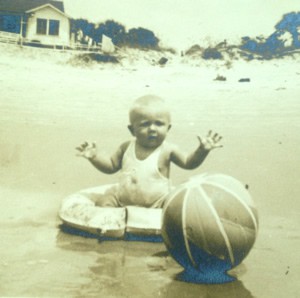 I mailed the baby on the beach photograph to California after I spoke with the younger brother. He was thrilled to know about the 1935 photograph. While on the phone, he shared the story of how his parents met on Folly Beach.
I mailed the baby on the beach photograph to California after I spoke with the younger brother. He was thrilled to know about the 1935 photograph. While on the phone, he shared the story of how his parents met on Folly Beach.
I left a message for and had my call returned from a man that I’ll call JEH in South Carolina. Years ago, when JEH was a boy, his father died at age 41. Today, I was able to tell him that I had a box filled with family photographs and letters from his late father. As you can imagine, the shock of this made him a man of few words on the phone. Many of the images record childhood milestones.
Knowing these photographs are again in the hands of the families is immensely rewarding. While I do not know the people I’ve been in contact with, I have had a glimpse into their families’ pasts. I will make a pilgrimage of sorts to Magnolia Cemetery in Charleston and visit the grave of the baby on the beach.
Elizabeth Halberstadt is an educator who lives in West Ashley. Since writing this story, she has visited the cemetery.
COMMENTARYActs of forgiveness may be key to real power
By Andy Brack, editor and publisher
AUG. 10, 2015 | The whole notion of forgiveness has been in the front of many people’s minds in the weeks since the massacre at Emanuel AME Church. Just how, they wonder, could family members of the victims, one after another, forgive the accused shooter so quickly after such a reprehensible deed?
![]() One pastor explains forgiving is the natural, almost instinctive reaction of people who live lives based on a deep faith in God. Because of faith, they already feel forgiven for the sins they confess to their maker. When an evil was done to members of their family, forgiveness was a the way for the faithful person to cope and react.
One pastor explains forgiving is the natural, almost instinctive reaction of people who live lives based on a deep faith in God. Because of faith, they already feel forgiven for the sins they confess to their maker. When an evil was done to members of their family, forgiveness was a the way for the faithful person to cope and react.
The act of forgiving, this pastor said, allows those who mourn to feel free of hatred, free of anger, free of bitterness. Instead of spiraling down and succumbing to the evil, they stare it in the face and find solace in what they’ve learned for generations from their families and their churches — to feel free to love, not hate.
For blacks in South Carolina and across the South, forgiveness has been built into day-to-day life, year after year, from slavery and Jim Crow times to civil rights marches and #BlackLivesMatter rallies.
It’s pure New Testament. Jesus Christ taught love and forgiveness, observes the Rev. Joseph Darby, presiding elder of the local AME churches. It’s part of what blacks, often powerless in a patriarchal, plantation society, had to do to survive.
“Black people had to coexist with people who owned them, who could rape, kill or sell them, and the black people couldn’t strike back,” says Darby, a longtime civil rights activist. “Black folk in South Carolina learned to forgive.”
That doesn’t mean that faithful families aren’t angered, saddened or hurting from the violence that took their kin from them. But forgiveness helps compartmentalize the pain — to shove it aside so that love can bloom and heal.
For the victims’ families who worship at Emanuel AME Church and other churches, forgiving is part of faith and love of God. But for those who don’t grow in a religious culture that forgives may have a hard time grappling with the bold, public examples of forgiveness by worshippers at Emanuel AME. The concept of forgiveness may be more abstract, something not as ingrained in daily living. But the tragedy in Charleston is forcing people across the Holy City to confront the intertwining of forgiveness, hate, fear and love.
A new novel by Asheville writer Vally Sharpe may offer some help and warmth to those struggling with faith, reality and forgiveness.
 “The Gospel According to Emily,” is a tender, touching story of a Georgia family with two sons, one of whom is a little different. This son helps people, does good deeds and changes lives as he tries to unburden people of their troubles. The parallels to the story of Christ are familiar and comfortable.
“The Gospel According to Emily,” is a tender, touching story of a Georgia family with two sons, one of whom is a little different. This son helps people, does good deeds and changes lives as he tries to unburden people of their troubles. The parallels to the story of Christ are familiar and comfortable.
In a key passage, Sharpe examines how people can interpret the same incident in different ways, which is instructive for those seeking to better understand forgiveness.
Consider how a guy stuck in rush-hour traffic might react if he were cut off by another driver who slid ahead of him. The enraged driver could speed up — even bump the rear of the driver’s car to get him to pull off the road, which could then escalate into a fight, or even worse — one of them would pull a gun on the other.
But what if, Sharpe wondered, the guy who slid ahead of the other car was lost or made an honest mistake. He might not have even realized that he did something wrong because of the error. If the second guy knew that — instead of assuming malice — the reaction might have been different. Sharpe writes:
“We do it all the time. We focus on scarcity where there is none and by hoarding whatever we think is scarce for ourselves against the day we imagine it will all run out, we bring bona fide scarcity into existence.
“We focus on fear instead of love, on judgment and blame instead of acceptance and forgiveness, on war instead of peace And some, particularly in political circles, do it on purpose, because they know that if you can influence what others think, you can gain control over them. We think of that as power, when it’s yet another illusion because that version of power operates from a place of fear and for good reason. The threat that someone will try to take it away from you is ever-present.
“If you buy into that definition of power, then the only way you can contain your fear is by destroying those you think are out to take it away from you — by influencing others to perceive them as dangerous to them, too. But real power can’t be taken away.”
Forgiving, as Sharpe suggests in the novel that she calls “an imagining,” offers real power that strips away hate and feelings that will destroy. Isn’t that how victims’ families reacted to the Emanuel Nine tragedy?
Andy Brack is editor and publisher of Charleston Currents. You can purchase Sharpe’s book at Amazon.com. Have a comment? editor@charlestoncurrents.com.
IN THE SPOTLIGHTCharleston Green Commercial
 The public spiritedness of our underwriters allows us to bring Charleston Currents to you at no cost. Today we shine our spotlight on Charleston Green Commercial, a full-service commercial property management company that pays attention to detail, provides exceptional personal service and is committed to adding value to buildings. Offering professional property management, consulting and other services, the company strives to improve clients’ bottom lines with superior service, accessibility, reliability and a wealth of knowledge of the Charleston real estate market. By blending use of proven contractors and contacts with environmentally-conscious practices, the company helps clients stay on the leading edge of commercial real estate practices. More.
The public spiritedness of our underwriters allows us to bring Charleston Currents to you at no cost. Today we shine our spotlight on Charleston Green Commercial, a full-service commercial property management company that pays attention to detail, provides exceptional personal service and is committed to adding value to buildings. Offering professional property management, consulting and other services, the company strives to improve clients’ bottom lines with superior service, accessibility, reliability and a wealth of knowledge of the Charleston real estate market. By blending use of proven contractors and contacts with environmentally-conscious practices, the company helps clients stay on the leading edge of commercial real estate practices. More.
County offers redesigned GIS site
Charleston County’s Technology Service’s Geographical Information Systems (GIS) Division has launched an updated version of its webpage, the first redesign in 10 years.
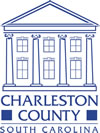 The searchable page includes a hyperlink by Parcel ID number providing seamless access to the property tax website, the ability to generate mailing labels and add graphics to enhance presentations. Plus, you will now have the ability to use your mobile devices and use the Google Street View, according to a new release.
The searchable page includes a hyperlink by Parcel ID number providing seamless access to the property tax website, the ability to generate mailing labels and add graphics to enhance presentations. Plus, you will now have the ability to use your mobile devices and use the Google Street View, according to a new release.
Other benefits of the new system include:
- Current up-to-date GIS data available 24/7
- The latest imagery collected in January 2015 (plus 2001, 2009, 2012)
- The use of latest GIS ESRI technology
- Supports Google Chrome, IE10 or greater and Mozilla Firefox
- Greater flexibility in moving through the website with pan and zoom controls
“The roll out of the new website was driven by changes in technology and the need to make the latest GIS data available to the user community,” said GIS Coordinator Brenda Wheatley. “As we all know, change can be trying and difficult. Over time, I feel the user community will agree the new website is much more efficient than the previous one.”
Also in good news:
Popular musical starts three-week run: Charleston Stage will open the popular musical comedy, The Producers, A New Mel Brooks Musical, for a three-week run that starts April 28.
 Winner of 12 Tony awards, this Broadway version is based on Brooks’ 1968 movie, The Producers. Both it and the musical make fun of show business and just about everything else along the way. The Producers does contain adult language and situations and may not be appropriate for all ages. Parent Guides are available for download online at www.charlestonstage.com.
Winner of 12 Tony awards, this Broadway version is based on Brooks’ 1968 movie, The Producers. Both it and the musical make fun of show business and just about everything else along the way. The Producers does contain adult language and situations and may not be appropriate for all ages. Parent Guides are available for download online at www.charlestonstage.com.
“We’re excited to be producing this award-winning musical comedy once again,” says director Marybeth Clark. “In 2009 while the Historic Dock Street Theatre underwent a $19 million dollar renovation, we mounted The Producers at the Sottile Theatre where it received rave reviews. We couldn’t be more thrilled to bring it back to the Dock Street stage!
The show runs Aug. 28-29, Sept. 3-5, 10-12 and 17-19 at 7:30 p.m., and Aug. 30, Sept. 6, 13 and 20 at 3 p.m. Tickets start at $52 for adults, $50 for seniors, and $27 for students and active military. More info: www.charlestonstage.com.
North Charleston to open new facility: Forty years after opening its first Public Works facility, North Charleston at 10 a.m. Thursday will open a new, state of the art complex posed to streamline services from a central location within the city.
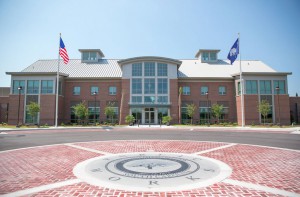 The $42 million multi-building campus on Casper Padgett Way, is spread across 38 acres. It houses public works functions, such as engineering, street and sidewalk maintenance, stormwater maintenance and utility, solid waste disposal, traffic signs and signals, landscaping, city facilities maintenance and repair, fleet maintenance, and construction contract administration.
The $42 million multi-building campus on Casper Padgett Way, is spread across 38 acres. It houses public works functions, such as engineering, street and sidewalk maintenance, stormwater maintenance and utility, solid waste disposal, traffic signs and signals, landscaping, city facilities maintenance and repair, fleet maintenance, and construction contract administration.
“We are proud to open a Public Works complex that fits the stature of our growing city. From an old, small, metal creek-side building to a beautiful campus on repurposed land from the federal government, this facility ensures the capacity to handle the growth of North Charleston over the decades to come,” North Charleston Mayor Keith Summey said today.
FEEDBACKSend us a letter
Tell us what you really think. If you have an opinion on something we’ve offered or on a subject related to the Lowcountry, please send your letters of 150 words or less to: editor@charlestoncurrents.com. Our feedback policy.
CALENDARAug. 10+: Back-to-school, movies, plays
 (NEW) Free school kits and backpacks: 2 p.m., Aug. 12, Charleston Housing Authority, 562 Meeting St., Charleston. Molina healthcare is hosting a back-to-school fair where students will also be able to get health and dental screenings.
(NEW) Free school kits and backpacks: 2 p.m., Aug. 12, Charleston Housing Authority, 562 Meeting St., Charleston. Molina healthcare is hosting a back-to-school fair where students will also be able to get health and dental screenings.
(NEW) Q&A with director: 7 p.m., Aug. 14, Terrace Theater, 1956 D Maybank Hwy, Charleston. Award-winning director David Gordon Green will answer questions following the screening of his film Manglehorn, the story of a locksmith whose life is transformed by a new romance. The film stars Al Pacino and Holly Hunter. Tickets are $10. More: http://www.terracetheater.com
Dirty Rotten Scoundrels: Through Aug. 23, Footlight Players, 20 Queen St., Charleston. The Footlight Players opens its 84th season with the regional premiere of “Dirty Rotten Scoundrels,” a musical based on the 1988 film of the same name. Performances are 8 p.m. Aug. 7, 8, 14, 15, 20, 21, 22 and at 3 p.m. Aug. 9, 16, 23. Performance is not suitable for children under 13 years. Tickets are $35 for adults; $32 for seniors/military; $25 for students. Order tickets online at footlightplayers.net or by calling the box office at 843-722-4487.
(NEW) Disaster preparedness training for business: 6 p.m., Aug. 19, Room A214, Lonnie Hamilton III Public Services Building, 4045 Bridge View Drive, North Charleston. Charleston County will offer a free seminar for small business owners on disaster preparedness. Register here.
Shaking a leg. The Folly Beach Pier is set to have more Moonlight Mixers throughout the summer starting at 7 p.m. A DJ will spin great old tunes to keep your feet moving. Dates are Aug. 21 and Sept. 18. In Mount Pleasant, the Shaggin’ on the Cooper series will be held Aug. 15 and Sept. 12. Click here for more.
Schein to talk: 7 p.m. Aug. 25, Charleston Jewish Community Center. As part of JCC Jewish Bookfest this year, Beaufort author Bernie Schein will talk about his zany Southern epic novel, “Famous All Over Town,” that revisits South Carolina issues and adds some Charleston gossip. Admission: $5 for JCC members; $7 for all. More: Contact Sandra Brett. sandrab@charlestonjcc.org
Bird walks: 8:30 a.m. to noon, every Wednesday and Saturday. This is the time of year that a great variety of migrating birds fly through the Lowcountry so what better time to take part in one of the regular early morning bird walks at Caw Caw Interpretive Center in Ravenel. Pre-registration is suggested. Cost is $5. Walks also are conducted on James Island and Folly Beach. Learn more online.
If you have an event to list on our calendar, please send it to editor@charlestoncurrents.com for consideration. The calendar is updated weekly on Mondays.
REVIEWThe Travels of Daniel Ascher
A novel by Déborah Lévy-Bertherat, translated from the French by Adriana Hunter
![]() Don’t let the size of this book fool you—it’s petite but rich in historical scope, emotional depth, and intricately woven story lines. In The Travels of Daniel Ascher, Hélène is a student at the Institute of Archaeology in Paris, occupying a room in her frequently traveling great-uncle’s home. Her great-uncle Daniel, a much-beloved children’s book author, is the subject of worship and curiosity among Hélène’s classmates, who grew up reading his popular series of adventure books. During Hélène’s stay in Paris, she sets out to learn more about her famous and mysterious uncle. She discovers that Daniel and, by extension, Hélène’s family have deep, dusty secrets dating to Nazi-occupied France. Reaching from the 1940s to 2012, and weaving this family mystery with Hélène’s own journey into adulthood, Lévy-Bertherat creates a story as multi-layered as a Napoleon pastry. It’s a story about family and love, and the way these can be ripped apart and sometimes patched back together—though never seamlessly. In sum, The Travels of Daniel Ascher is a small, but exquisite gem, a richly layered pastry, a stay-up-all-night-to-finish-but-don’t-regret-it type of a novel.
Don’t let the size of this book fool you—it’s petite but rich in historical scope, emotional depth, and intricately woven story lines. In The Travels of Daniel Ascher, Hélène is a student at the Institute of Archaeology in Paris, occupying a room in her frequently traveling great-uncle’s home. Her great-uncle Daniel, a much-beloved children’s book author, is the subject of worship and curiosity among Hélène’s classmates, who grew up reading his popular series of adventure books. During Hélène’s stay in Paris, she sets out to learn more about her famous and mysterious uncle. She discovers that Daniel and, by extension, Hélène’s family have deep, dusty secrets dating to Nazi-occupied France. Reaching from the 1940s to 2012, and weaving this family mystery with Hélène’s own journey into adulthood, Lévy-Bertherat creates a story as multi-layered as a Napoleon pastry. It’s a story about family and love, and the way these can be ripped apart and sometimes patched back together—though never seamlessly. In sum, The Travels of Daniel Ascher is a small, but exquisite gem, a richly layered pastry, a stay-up-all-night-to-finish-but-don’t-regret-it type of a novel.
— Sarah Burriss, Main Library, Charleston, S.C.
Find this and similar titles from Charleston County Public Library. This item available as a book. To learn more or place a hold, visit www.ccpl.org or call 843-805-6930.
MYSTERY PHOTOLooks familiar, but where?
The dappled light dances along this green tunnel of foliage over a sandy path. It’s in Charleston County, but where? Send your guesses to editor@charlestoncurrents.com to win baseball tickets — and make sure to include your contact information and hometown.
 Last week’s mystery: Public relations maven Cheryl Smithem of Folly Beach was first to identify last week’s mystery flower as cockscomb or crested celosia. “My mother always grew lots of them,” she wrote.
Last week’s mystery: Public relations maven Cheryl Smithem of Folly Beach was first to identify last week’s mystery flower as cockscomb or crested celosia. “My mother always grew lots of them,” she wrote.
Marcia Rosenberg of Mount Pleasant recalled that she grew three different colors of the flower a few years ago with great success, but tried the following year and got no blooms. Kathy Woolsey of James island writes that cockscomb and Love Lies Bleeding, both pictured in the last issue, are in the same family, Amaranthaceae. “They can be difficult to grow here in the Lowcountry because bugs devour the foliage.”
Laura Morris of Mount Pleasant was among several who identified the flower via our Facebook page. She noted the plant is “from East Africa where it was the most common vegetable and a staple in the diet of many of the slaves that were brought here for the expertise in growing rice. It was grown here in Charleston frequently as an ornamental, a healthy green vegetable, and a medicinal. It is a celosia, and I can provide personal testimony that it does wonders for dry eye.”
Others who correctly spotted the flower, called “velvet flower” by some, included Judy Carberry and Carol Ann Smalley of Charleston; Chris Brooks and April Gordon of Mount Pleasant; Kimberly LeGere of Summerville; Shelby Vargo of North Charleston; and Sharra Klug of Charlottesville, Va. — right down the road from where we took the picture. Thanks all!
- If you have a picture with which you’d like to stump our readers, send it along to editor@charlestoncurrents.com.
Gov. Robert. E. McNair
S.C. Encyclopedia | Robert Evander McNair was born on Dec. 14, 1923, at Cades in Williamsburg County, the only child of Daniel Evander McNair and Claudia Crawford. He was raised at the family home in Berkeley County and graduated from Macedonia High School. During World War II, McNair enlisted in the U.S. Navy, attained the rank of lieutenant (jg), and served twenty-two months in the Pacific theater. He was awarded the Bronze Star Medal for his actions in rescuing thirty-five personnel from a destroyed Liberty Boat. McNair married Josephine Robinson of Allendale in San Francisco on May 30, 1944, only days prior to his being shipped overseas. The marriage produced four children.
After military service, McNair returned to the University of South Carolina, where he earned the A.B. degree in 1947 and the LL.B. in 1948. He entered law practice in Moncks Corner and ran for political office for the first time, losing in a 1948 race for the House of Representatives. It would be the only loss of his political career. The McNairs moved to Allendale, where he set up law practice and ran again for public office. He won the state House seat from Allendale County in 1950 and launched a successful political career that would gain him statewide and national attention over the next two decades.
McNair entered the House of Representatives in 1951 and quickly attained positions. He became chairman of the House Committee on Labor, Commerce, and Industry in his second term and shepherded through the state’s right-to-work law that limited the power of labor unions and strengthened the state’s industrial recruitment efforts. Two years later, in 1955, McNair became chairman of the powerful House Judiciary Committee, a position he held until he ran for lieutenant governor in 1962. McNair won that contest, defeating Oconee County senator Marshall J. Parker.
McNair became governor on April 22, 1965, upon the resignation of incumbent governor Donald S. Russell, who stepped down to fill the U.S. Senate seat vacated by the death of Olin D. Johnston. McNair was elected to a full term on Nov. 8, 1966, with significant support from newly enfranchised black voters, defeating Republican Joseph O. Rogers of Manning.
The McNair administration coincided with major civil rights initiatives and significant public protests and demonstrations in the last half of the 1960s. In 1967 a classroom boycott at South Carolina State College resulted in the replacement of the college’s president, changing of student roles and procedures, and significant new funding for the institution. The following year, on February 8, protests at a segregated bowling alley in Orangeburg resulted in the killing of three demonstrators and the wounding of 32 others on the S.C. State campus. At the Medical College Hospital in Charleston, a 113-day strike from March to June 1969 protested wages and working conditions among low-income black workers and sought to gain state recognition for their union local. The governor also faced two weeks of protests against the Vietnam War at the University of South Carolina in the spring of 1970 by students seeking to close the institution in the wake of the shooting deaths of four students at Kent State University in Ohio.
Except for the tragedy at Orangeburg in February 1968, McNair saw the state peacefully through the stormy times without yielding on major policy issues. Settlement of the Charleston strike without union recognition in 1969 and keeping USC open in 1970 without serious injury to students were foremost among many public demonstrations in the state in which his moderate leadership was credited with minimizing violence.
McNair also guided the state peacefully through the first year of total desegregation of the public school system in 1970. He counseled South Carolinians at the time, “We have run out of courts and we have run out of time. We will comply with the court rulings.” McNair made the first appointments of black citizens to state boards and commissions and desegregated his own executive staff in the Governor’s Office.
McNair’s support for public education was also evident in several initiatives. He championed compulsory school attendance as part of a comprehensive package of economic and educational proposals. He was successful in initiating public kindergartens, as well as developing programs designed to smooth the desegregation process. McNair pursued the recruitment of new industries and jobs, and he began the program of soliciting overseas investments, a strategy that blossomed under subsequent governors. It was also at his recommendation that the Department of Parks, Recreation, and Tourism was created in 1967, triggering the state’s long and successful development of tourism as a multibillion-dollar industry.
After leaving office in January 1971, McNair established the McNair Law Firm in Columbia, which grew to become one of the major firms in the South. He did not seek or serve in public office again after 1971. McNair died on Nov. 17, 2007.
– Excerpted from the entry by Philip G. Grose Jr. To read more about this or 2,000 other entries about South Carolina, check out The South Carolina Encyclopedia by USC Press. (Information used by permission.)
About Charleston CurrentsOUR UNDERWRITERS
Charleston Currents is an underwriter-supported weekly online journal of good news about the Charleston area and Lowcountry of South Carolina.
- Meet our underwriters
- To learn more about how your organization or business can benefit, click here to contact us. Or give us a holler on the phone at: 843.670.3996.
OUR TEAM
Charleston Currents offers insightful community comment and good news on events each week. It cuts through the information clutter to offer the best of what’s happening locally.
- Mailing address: O. Box. 22261 | Charleston, SC 29413
Phone: 843.670.3996
Charleston Currents is provided to you twice a week by:
- Editor and publisher: Andy Brack, 843.670.3996
- Contributing photographer: Michael Kaynard
- Contributing editor, real estate: Doug Holmes
- Contributing editors, seniors: Catherine LaFond, Mary Ross McQuage
- Contributing editor, money: Kyra Morris
- Contributing editor, Palmetto Poem: Marjory Wentworth
SUBSCRIBE FOR FREE
Subscriptions to Charleston Currents are free.
- Click here to subscribe.
- Unsubscribe. We don’t want to lose you as a reader of Charleston Currents, but if you must depart, please click here.


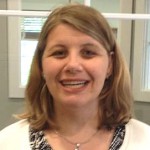
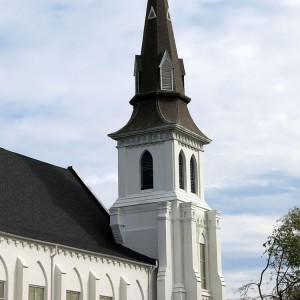
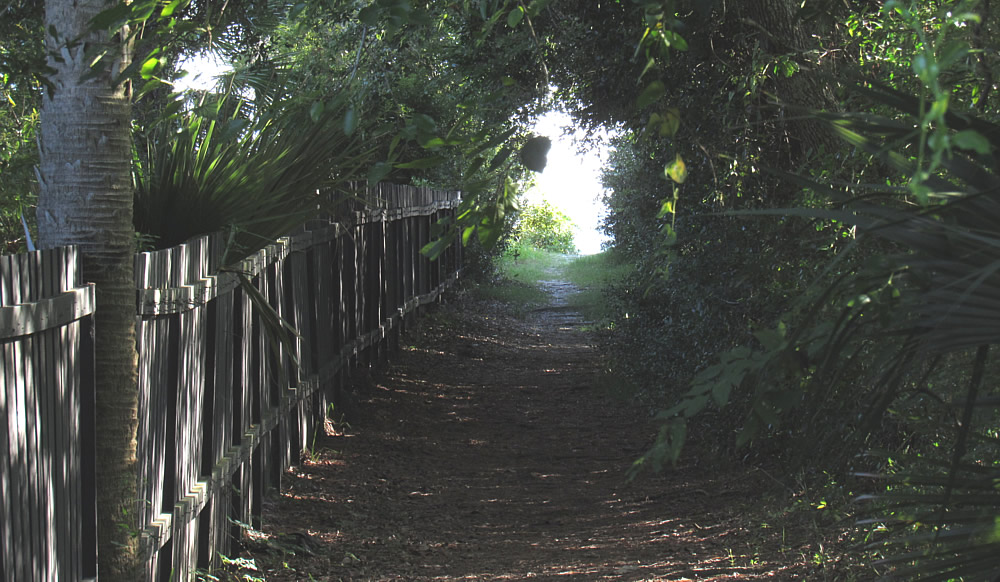
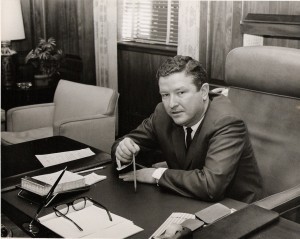

 We Can Do Better, South Carolina!
We Can Do Better, South Carolina!
























